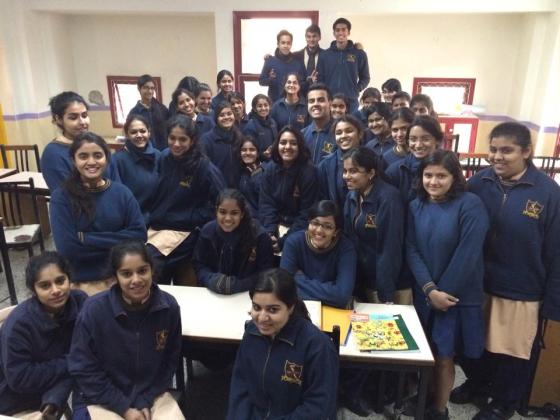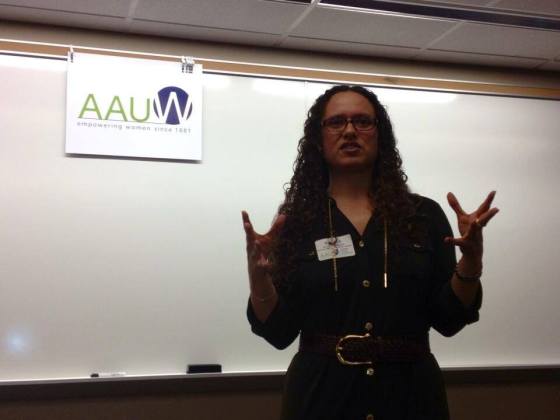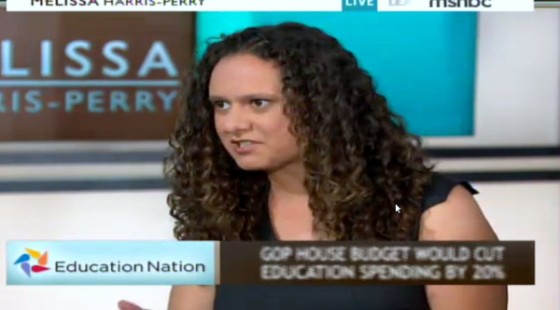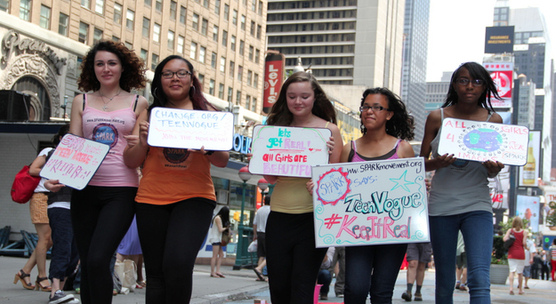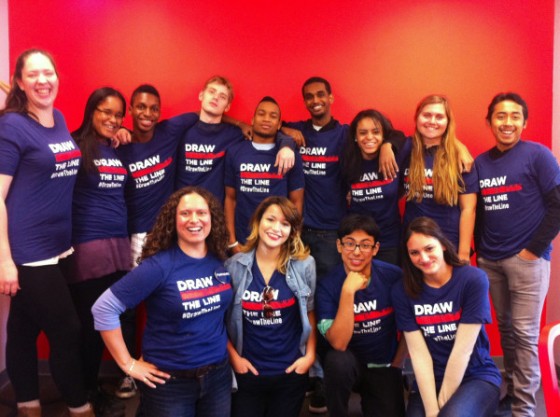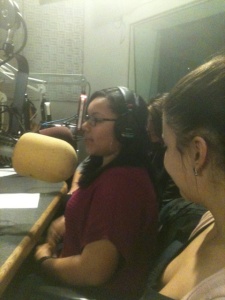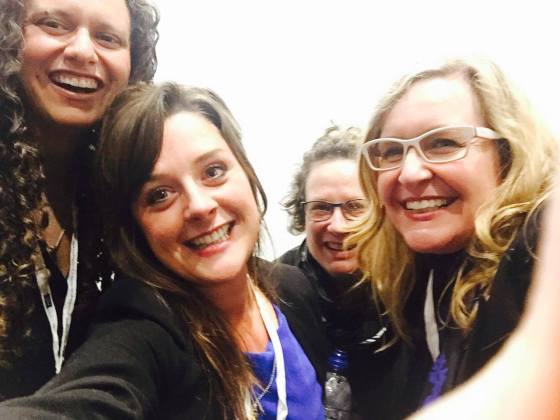
Feminism-in-schools movement leaders, Ileana Jiménez, Hanna Retallack, Marnina Gonick, and Jessica Ringrose, at the first International Girls’ Studies Association Conference, UK (photo courtesy, Ileana Jiménez)
Leaders in the feminism-in-schools movement recently made history at the inaugural International Girls’ Studies Association (IGSA) conference when we were featured in the event’s opening plenary at the University of East Anglia in Norwich, UK from April 7-9. It was the first time that a global girls’ studies conference featured teachers and researchers sharing our work together on #HSfeminism, a hashtag I created in the last few years to bring visibility to our movement.
As we each presented our papers individually followed by a panel discussion, Professor Marnina Gonick of Mount Saint Vincent University in Canada; Professor Jessica Ringrose and doctoral researcher, Hanna Retallack, both of the Institute of Education, University College, London; and I made a bold statement that our intersectional feminist pedagogies and practices are transforming the landscape of classroom curricula, student activism, and professional development for educators.
We were particularly honored that our plenary took place at the same time as the Black Girl Movement Conference, where activists and scholars gathered at Columbia University for three days in New York City to focus on Black girls, cisgender, queer, and trans girls, in the United States. We feel strongly that as girls’, women’s, and gender studies scholars, we must all work together collectively to support girls of color in our activism and teaching.
Now that we are post-conference and closing out our school year, I brought together my colleagues via email to reflect on what the IGSA plenary meant for us. Continue reading
